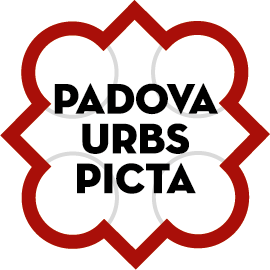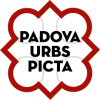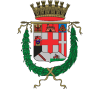The external facade is a tripartite structure resting on an escarpment base; its distinguishing feature is the chromatic contrast between the pairs of columns in light Istrian stone and the dark-coloured wall of trachyte. Within the keystone of the round-arched external gateway is carved the bust of a warrior that is said to depict the god Medoacus, whilst in the same place on the internal facade the sculpture refers to the city itself. Above the lateral gateways are trachyte bas-reliefs of four large shields, each with a central medallion in Istrian stone: these depict two rural deities, Bacchus and Ceres, on the outside wall, and two deities associated with civic virtues on the inside wall (Minerva and Neptune). The attic storey is occupied by dedications and celebrations of persons and events.
There are the crests of various city governors, with the Lion of St. Mark on the external face, and a large inscription on the internal wall that commemorates Doge Andrea Gritti (it bears the date 1530). The two crests on the external wall are those of Paolo Trevisan (podestà in 1529) and Priamo da Lezze (military governor from 1529 to 1530). Above the cornice of the attic storey, but partially hidden by the roof, are the embrasures which reveal this gateway also had a military function. The three-arch brick-built bridge over the moat dates from 1787, when Caterino Corner was prefetto of the city, and replaced a previous structure in wood. At the top of the gateway once stone a statue of the Lion of St. Mark, the symbol of the Venetian Republic, which was torn down by French troops in 1797. The Marcian Lion that one now sees on the Porta Savonarola dates from the early twentieth century and was put in place during restoration work on the gateway.
- DISCOVER
- LIVE
FOCUS
- GET INSPIRED
FOCUS
- INFO
- BOOK NOW












